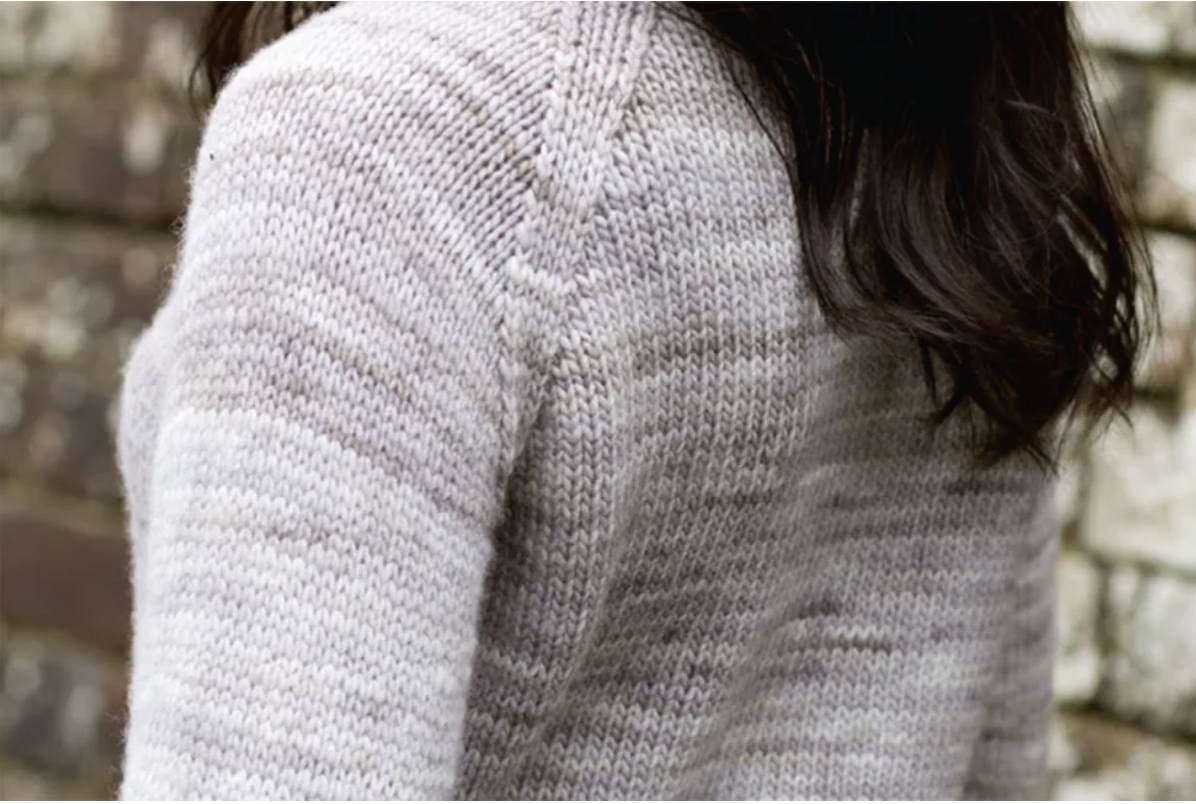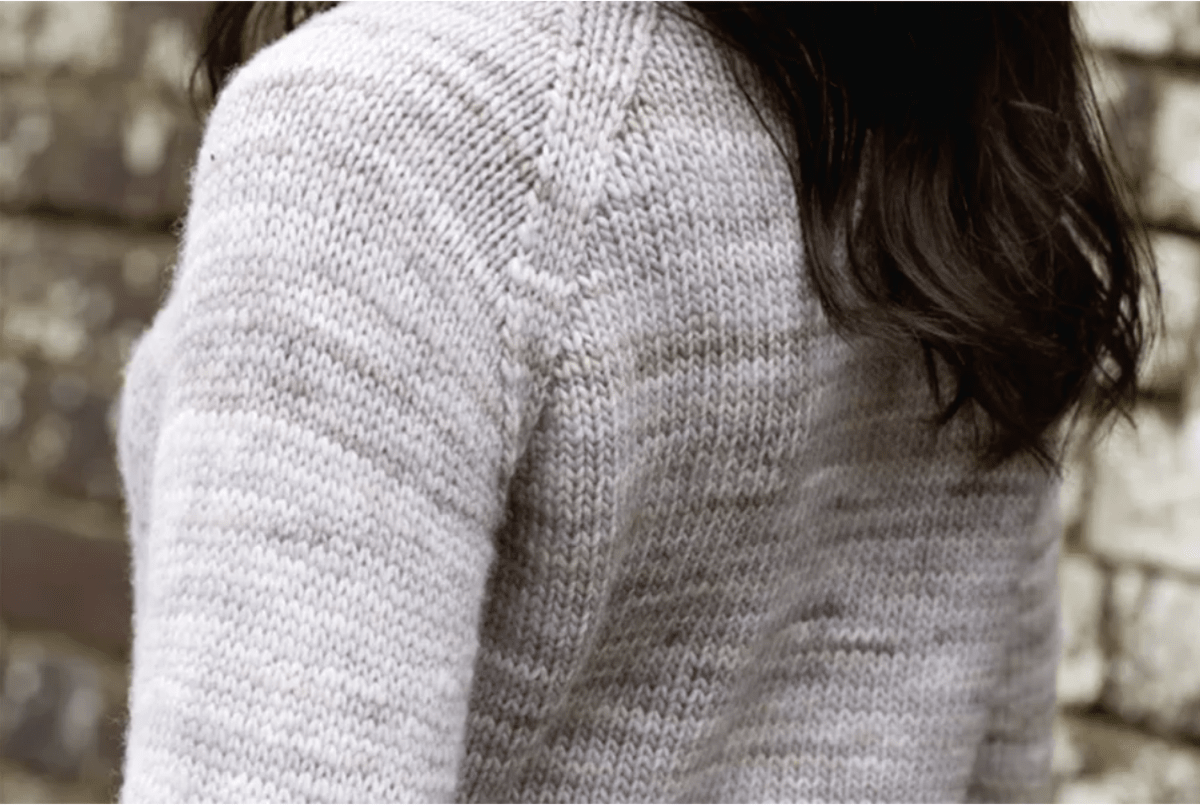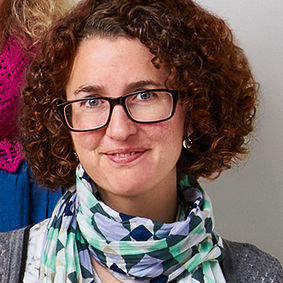How to set up German short rows
Step 1
Set up your German short rows by working a few rows of any width (or following you pattern if using one) up until the point you turn. Then turn your work, leaving the remaining stitches unworked on your right-hand needle.
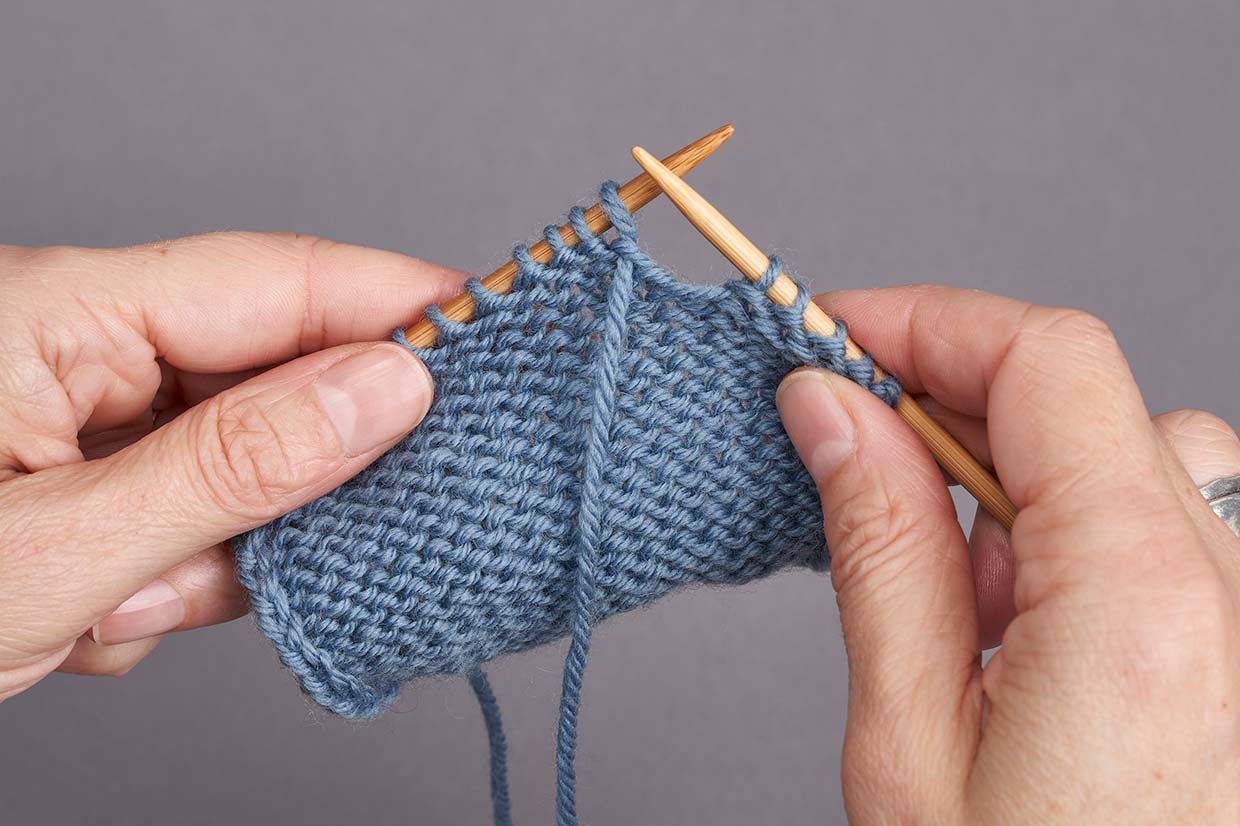
Working German short rows on a purl row
Step 1
Slip the first stitch on the left-hand needle, purlwise with the yarn in front, going from the left-hand needle to the right-hand needle.
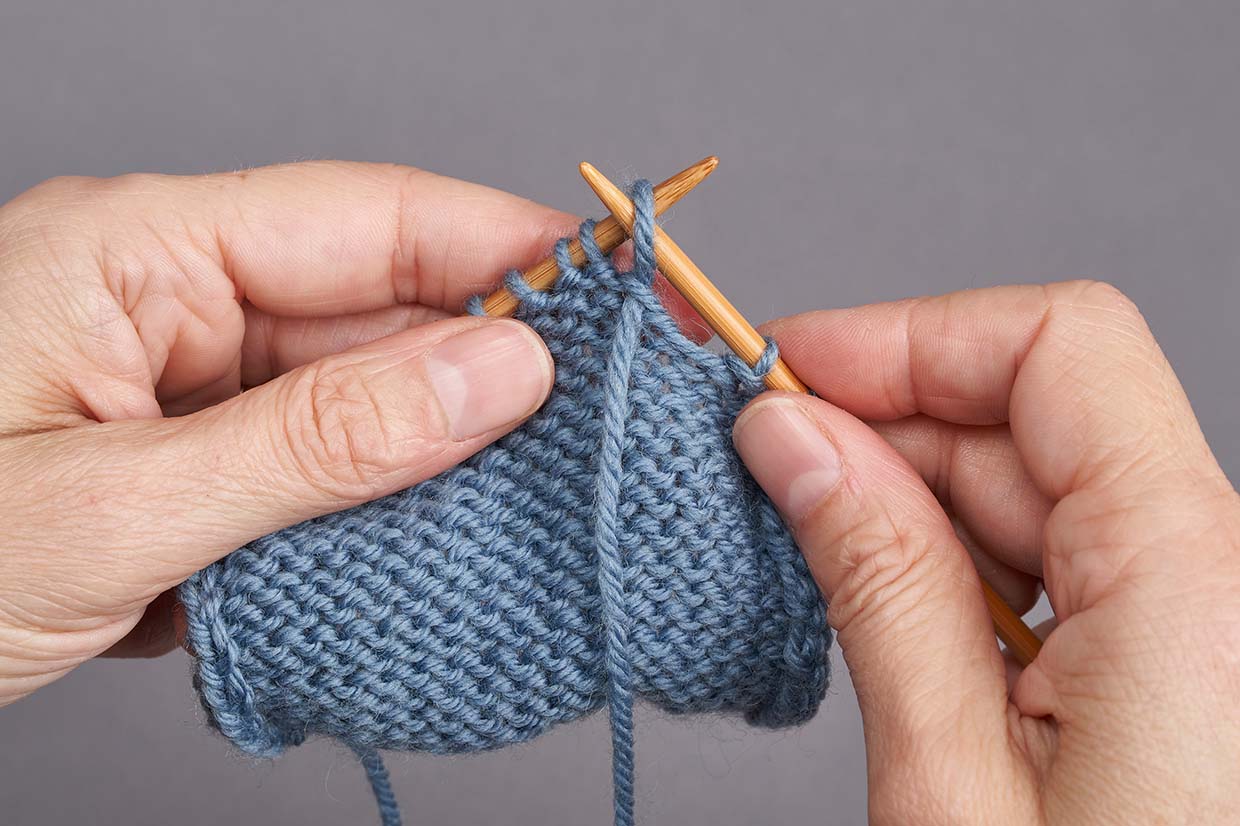
Step 2
Pull the working yarn firmly up and away from you towards the back of the work. This will pull up and tighten the slipped stitch, giving it a double ‘leg’ which makes it look like a strange double stitch.
The abbreviation DS is typically used to describe this ‘double stitch’ in knitting pattern instructions, and it is counted as one stitch.
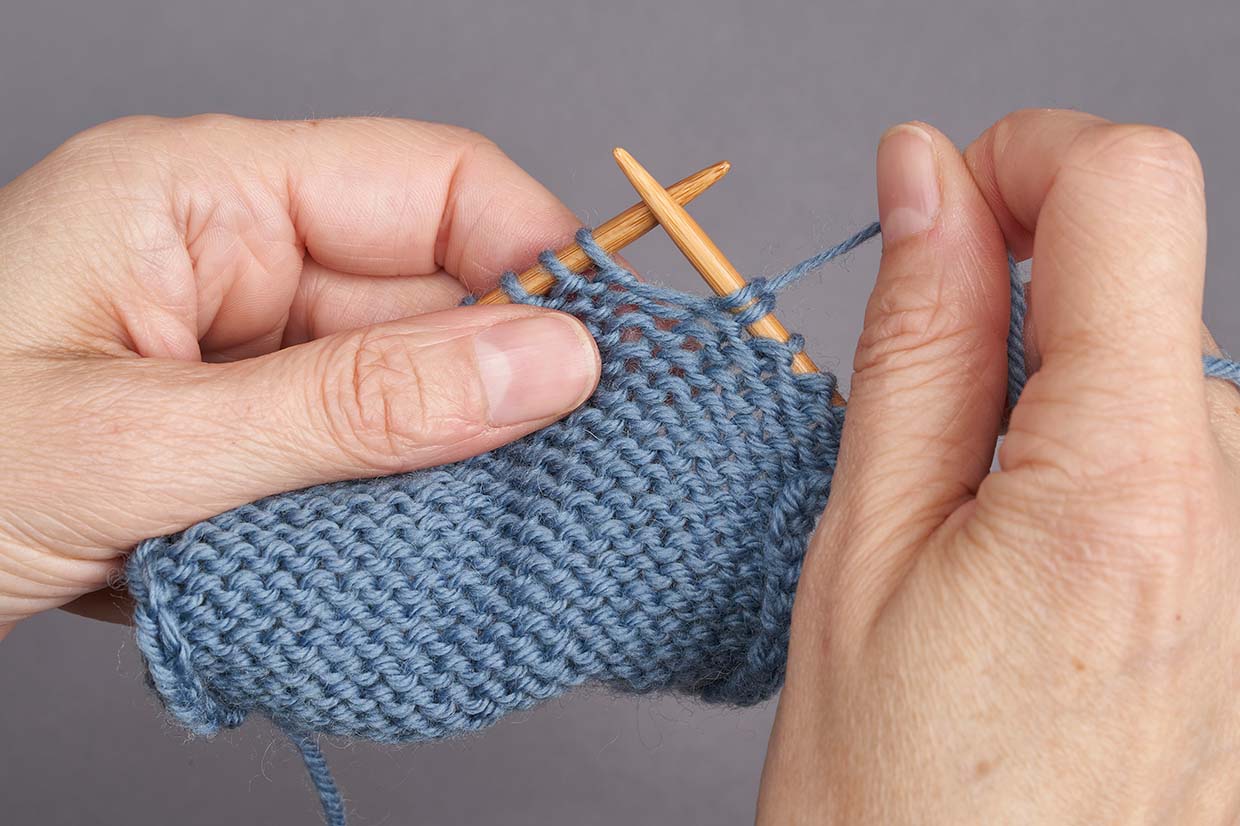
Step 3
Maintaining a firm tension on the yarn, bring the yarn back between the needles and purl the next stitch.
It will look like there are three loops – the initial slipped stitch, and the first purled stitch. Continue to purl to the end of the row.
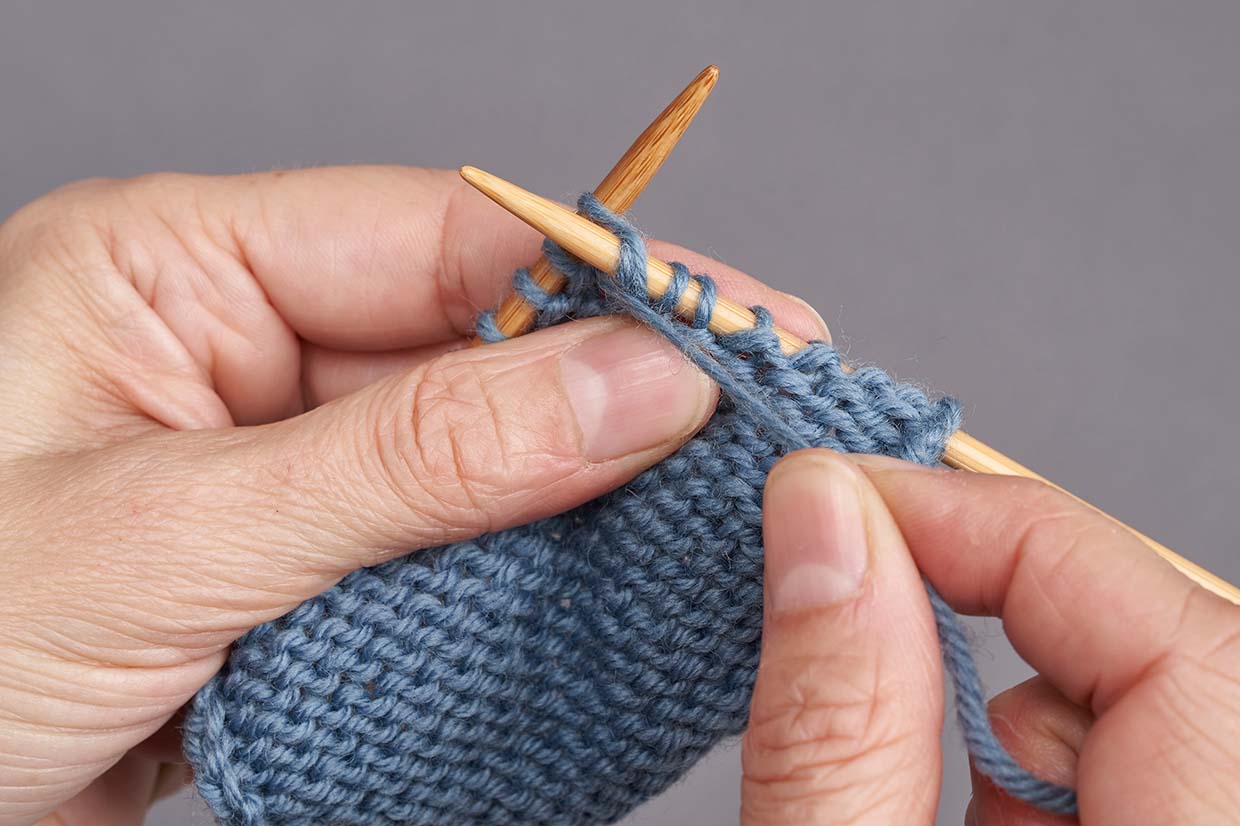
Working German short rows on a knit row
Step 1
Bring the yarn between the needles to the front of the work.
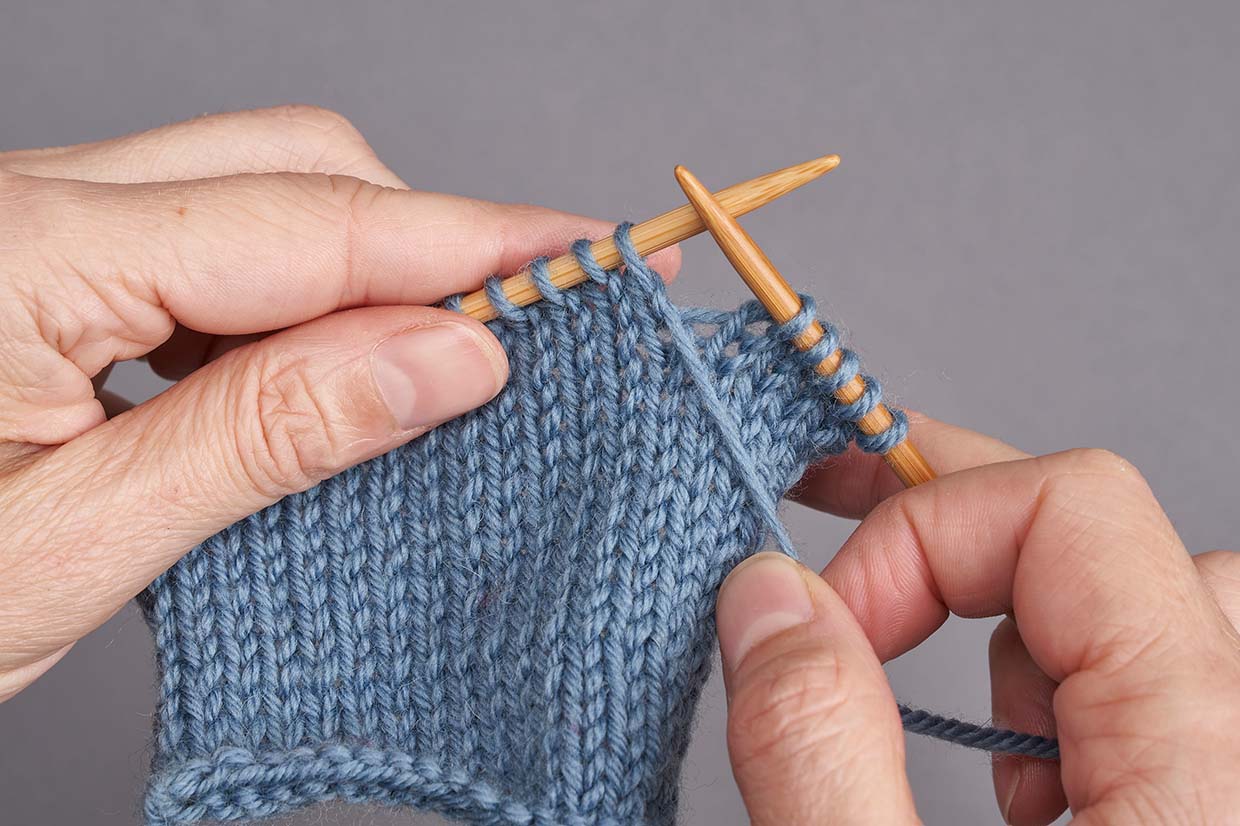
Step 2
Slip the first stitch on the left-hand needle, purlwise with the yarn in front, going from the left-hand needle to the right-hand needle.
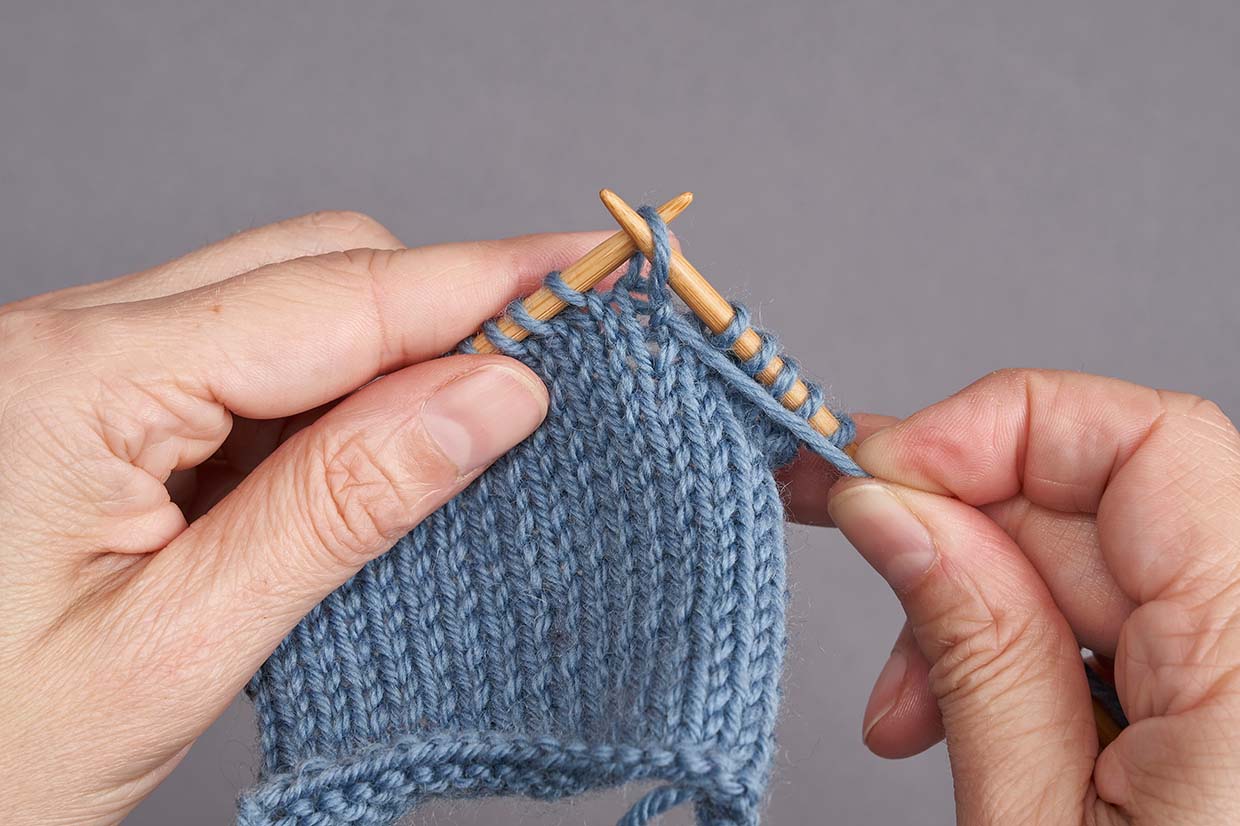
Step 3
Pull the working yarn firmly up and away from you towards the back of the work. This will pull up and tighten the stitch, and give it a double ‘leg’ (DS).
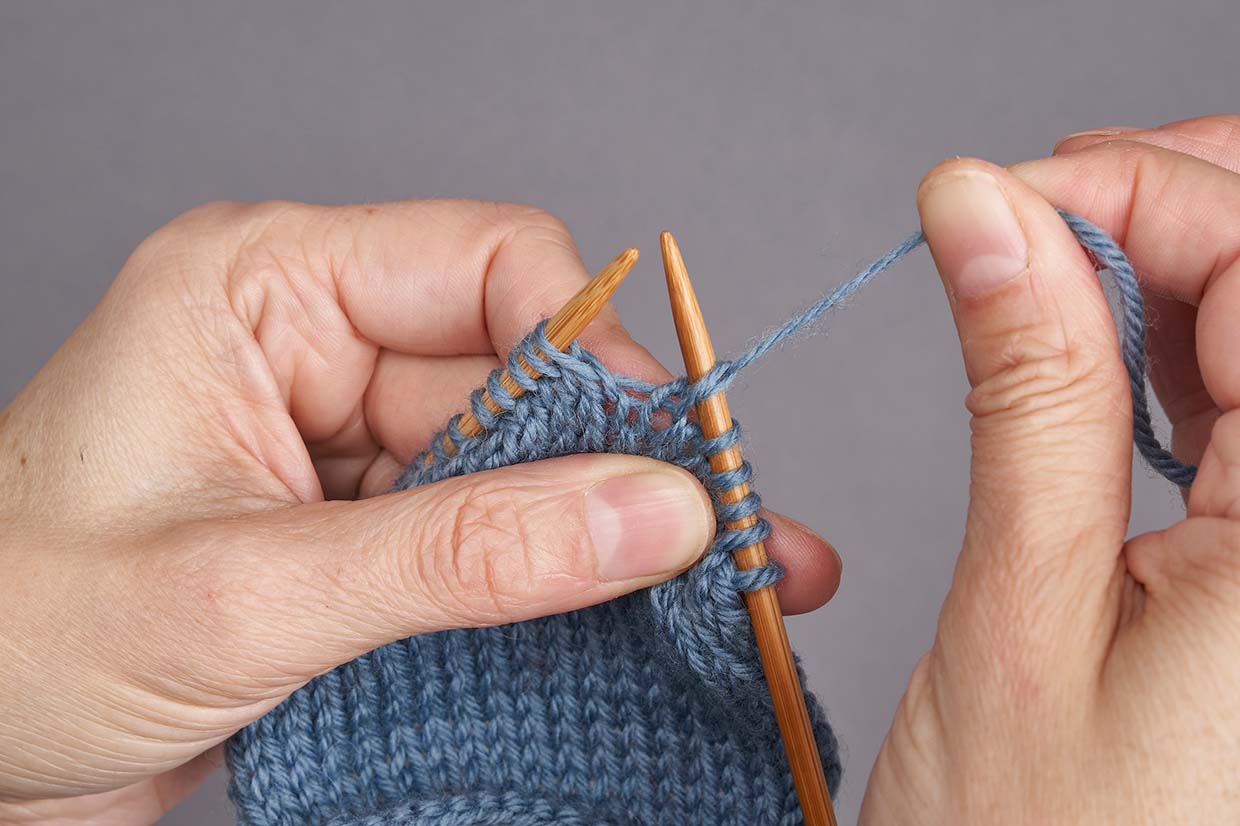
Step 4
Maintaining a high tension on the yarn, knit the next stitch. It will look like there are three loops – the initial slipped stitch, and the first knitted stitch. Continue to knit to the end of the row.
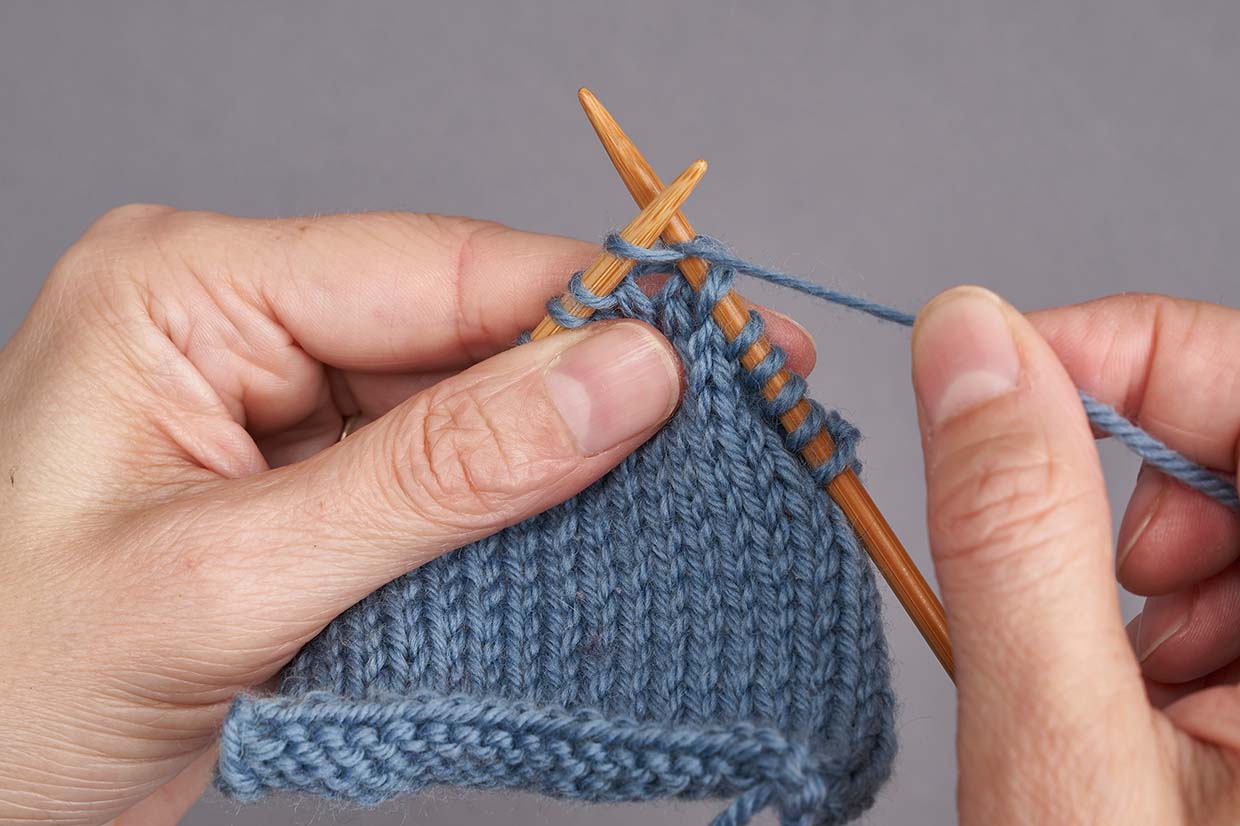
Resolving the double stitches in German short rows
Step 1
When working a row that has a double stitch on it, or if your pattern instructions tell you to work to within a certain number of stitches of the last double stitch, you will be able to spot where the double stitch is as there will be a slightly bigger gap to the left of it, and the slipped stitch will look like a double stitch.
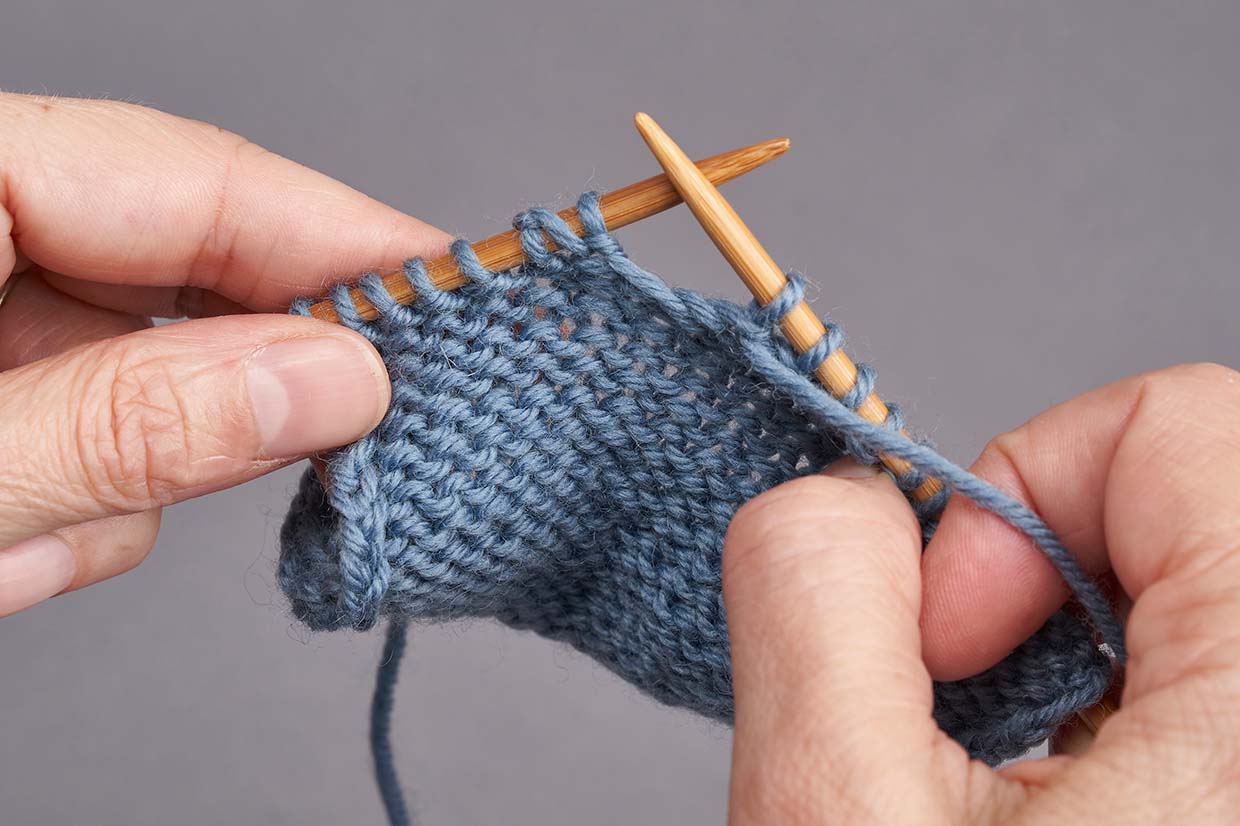
Step 2
When you come to work a double stitch (DS), treat it as a single stitch and either purl both legs of the double stitch together…
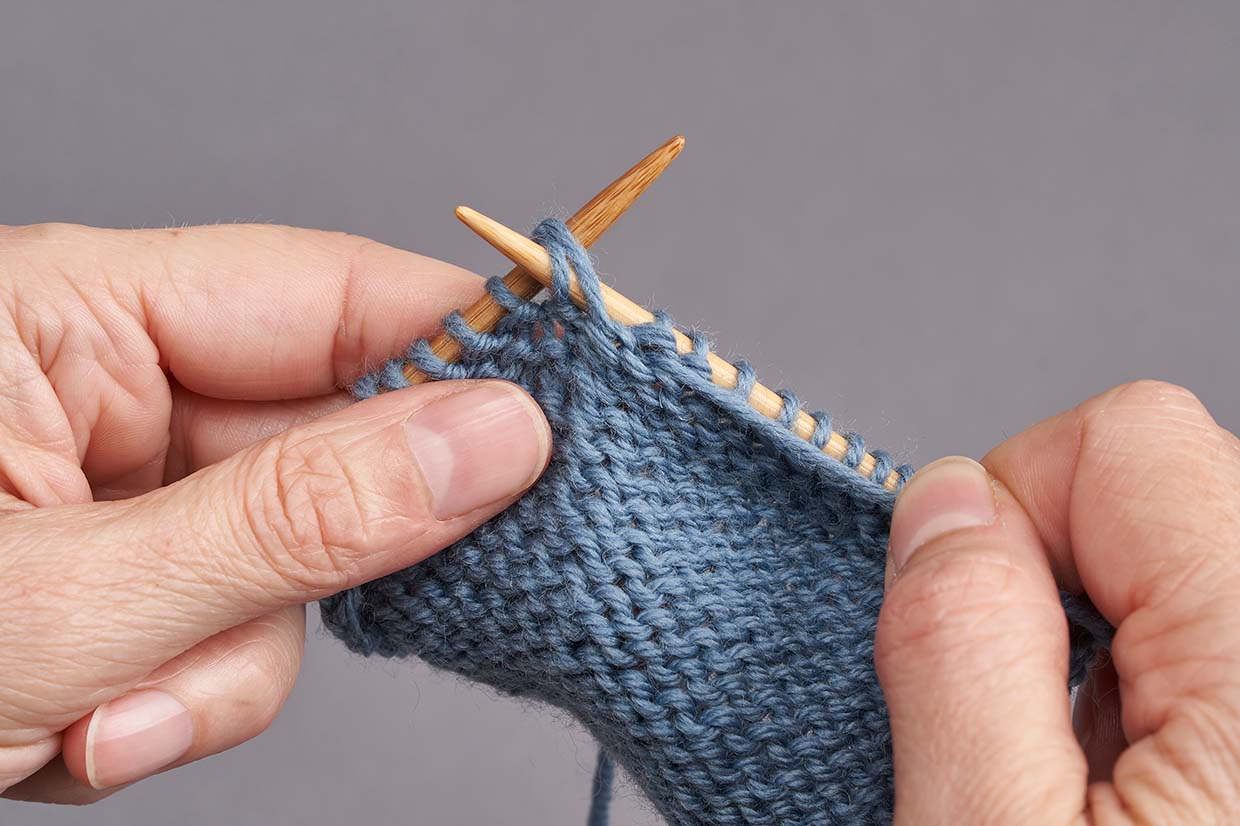
Step 3
… or knit them together.
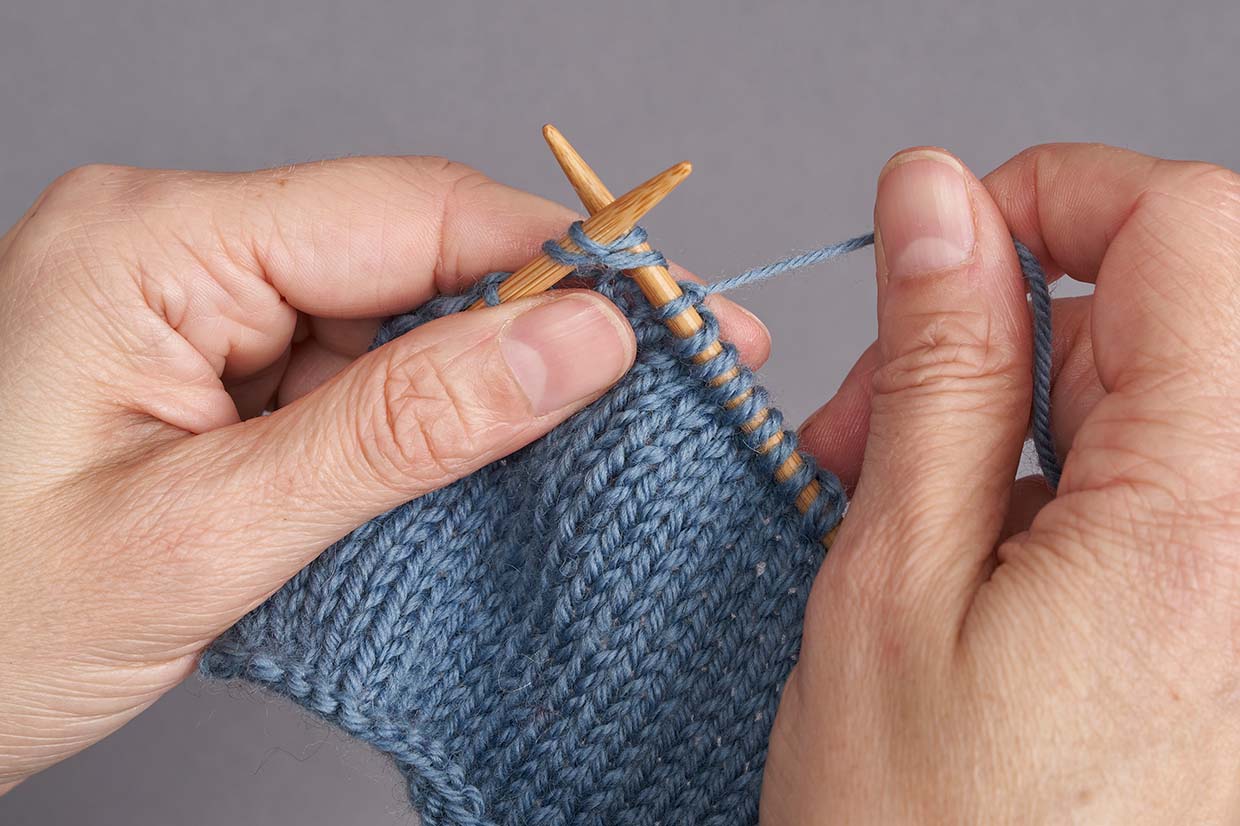
Step 4
If you’re following a pattern, it should indicate which method to use to resolve your double stitches.











